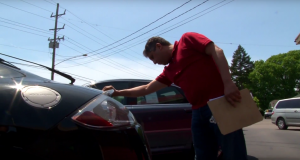 For dealers that purchase inventory with their own money, the cash flow needed to maintain and grow their dealership relies on their ability to sell vehicles. But what if a dealer is having issues moving inventory and making sales? What if it’s a slow time of the season? Many cash-buying dealers opposed to using floor plan lending might think they can always sell unwanted inventory at auction if they need to acquire additional capital.
For dealers that purchase inventory with their own money, the cash flow needed to maintain and grow their dealership relies on their ability to sell vehicles. But what if a dealer is having issues moving inventory and making sales? What if it’s a slow time of the season? Many cash-buying dealers opposed to using floor plan lending might think they can always sell unwanted inventory at auction if they need to acquire additional capital.
Of course, dealers can always sell inventory back at auction, and sometimes that is a valid action that dealers need to take. While it appears that purchasing inventory with cash is saving your dealership time and money, floor plan financing will provide more flexibility and more cash flow to grow your business operations and protect profits.
Converting inventory to cash
If vehicles purchased with cash don’t sell, dealership cash flow dwindles. Dealers have to choose whether to limit operations, or sell inventory at auction or to a wholesaler just to keep the dealership afloat.
Dealers looking to take their cash bought inventory back to auction to sell, they face a number of hurdles to just break even on that unit’s initial purchase price. First, if the vehicle has sat for a while on the dealer’s lot, it has likely incurred a significant amount of holding costs.
By the time that dealer realizes they need to get rid of a vehicle, it’s likely that the holding costs for the vehicle have already outweighed the costs a dealer thinks they saved on floor planning fees. Vehicles also don’t typically appreciate in value the longer they stay in a dealer’s possession. Considering those factors, it will be very difficult for dealers to break even selling their cash bought inventory at auction.
Even if a dealer can break even at auction, they still have to spend a significant amount of time and energy getting the inventory ready and processed for the auction sale date.
Independent auto dealers are limiting themselves when they purchase their inventory with cash. They are confining their capital—and subsequently their dealership cash flow—to that inventory.
Floor plan lending increases cash flow
Dealers that utilize floor plan lending have more options and flexibility when it comes to dealership cash flow.
With floor plan lending, dealers are given a line of credit to purchase inventory. Dealers purchase vehicles on their floor plan, and depending on their contracted terms, only have to pay a fraction of the inventory cost after a contractually determined number of days. If a vehicle sells, dealers pay back the cost of the loan.
For example, let’s say a dealer purchases a vehicle on their floor plan and after 30 days, the dealer owes a minimum payment—a fraction of the vehicle’s price tag. The dealer makes the payment, and sells the vehicle to a customer after an additional 15 days. This dealer not only made a profit, but they were able to use dealership savings to grow operations and pay their floor plan lender back the amount of the loan.
Even if a dealer doesn’t sell a vehicle as quickly as they would like, the flexibility a floor plan provides gives dealers the option to use their cash for other expenses to help grow their business.
Compared to purchasing a vehicle with auto floor plan financing, converting inventory into cash is not an efficient process. Cash buying dealers should consider what their capital could do if it wasn’t mostly being tied up in inventory.




